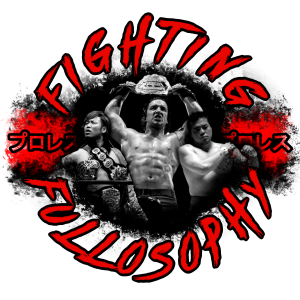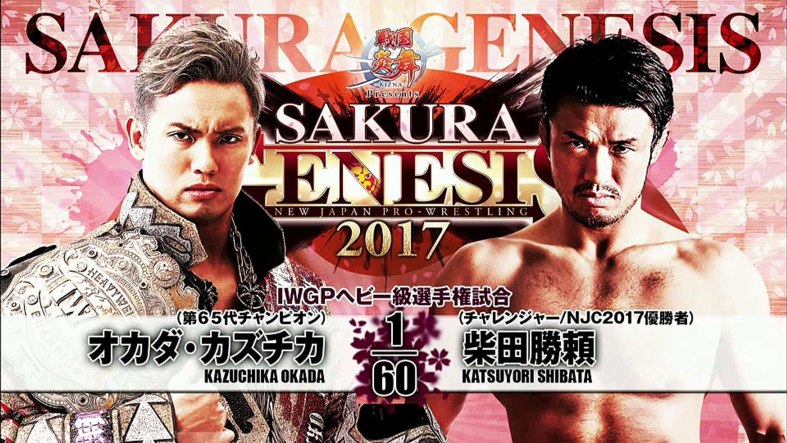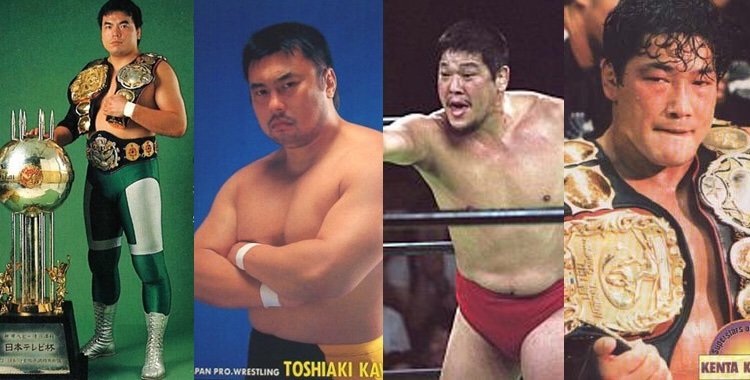
April 9th marked the two year anniversary of one of the greatest matches in the history of the IWGP almost ending in tragedy. On this night Katsuyori Shibata would make his long awaited challenge for the IWGP Heavyweight Championship, almost losing his life in the process. That statement isn’t an exaggeration smothered in kayfabe. A headbutt in the closing stretch would cause a subdural haematoma (where blood collects between the skull and the surface of the brain) and leave Shibata fighting for his life. Thankfully, Shibata would survive that night and is still with us today. Safe in the knowledge that Shibata lived, the fact he almost fought to the death to win the title adds a strangely poetic mystique to the match.
To mark the two year anniversary of this timeless classic, let’s dive into what makes this encounter one of the greatest in the history of New Japan.
The History
Modern day New Japan is a booming business that is in the midst of a golden era. An incredibly deep and diverse talent pool has led to more eyes on the product, as they continually produce some of the best wrestling on the planet. Backed by a solid streaming service, New Japan has their eyes set on global expansion. But take a look back to the early to mid-2000’s and we see a very different story. The wrestling boom that Japan experienced in the 90’s was dying down. At the turn of the century, Mitsuharu Misawa’s Pro Wrestling NOAH had immerged as the powerhouse in Japanese wrestling. Boasting a combination of the talent that made AJPW a powerhouse in the 90’s and some young talent, NOAH seized control of the smaller market. Coupled with a growing interest in MMA, New Japan was struggling to stay relevant.
To try and capitalise on the MMA boom, New Japan turned to some of the sports stars. However, instead of drawing MMA fans in this experiment only made the situation worse as the wrestling crowd had little interest in seeing these fighters in a wrestling ring. This issue was compounded by the fact that many of the fighters struggled to adapt. The result was very sloppy matches that usually stunk up the arena. With business at an all-time low and the very real threat of closure, New Japan turned to three young wrestlers. Hiroshi Tanahashi, Shinsuke Nakamura and Katsuyori Shibata were ear marked as the “New Three Musketeers” who would save the company.
While Tanahashi and Nakamura would remain loyal to New Japan, Shibata would leave the company in 2005 to become a freelancer. Stating that he didn’t want to be a “salary man” wrestler Shibata would carve his own path. One that would lead him to the rival promotion in Pro Wrestling NOAH and by 2007 he had moved on to MMA. These moves were viewed as a betrayal by those within the New Japan office and fan base. So upon Shibata’s return to the company in 2012, he was greeted with some hostility from those who felt he had turned his back on them. He had left them when they needed him the most and only returned when others had rebuilt the company. Undeterred by this reaction, Shibata worked tirelessly to fight his way back up through the ranks of New Japan. This would put him in the path of another wrestler struggling to work his way up, Tomohiro Ishii. Their rivalry would propel both men to greater heights and for Shibata, it would help him to win over the crowd. The passion, fire and fighting spirit Shibata displayed in these encounters earned him the respect of the fans. A throwback to the masters of strong style, Shibata would never back down from any fight.
After signing an exclusive contract with NJPW in 2016 and with his fan support restored, Shibata set his sights on the IWGP Heavyweight Championship. This path would take him on an incredible run through the 2017 New Japan Cup and grant him the opportunity he’d been waiting for. Standing before him was the man who had taken his place in rebuilding New Japan, Kazuchika Okada. For me, this is where the story of this match draws some fascinating parallels. With Shibata gone, NJPW would ear mark a Young Lion to be his replacement. Okada would make his full time return to NJPW in 2012 (the same year Shibata returned) and issue what would become a historic challenge to Tanahashi. The match and feud would catapult Okada into the limelight. Which begs the question, would this have been Shibata’s fate if he’d stayed? It’s a fascinating hypothetical which adds so much intrigue to this match.
To add fuel to this fire, Okada was very dismissive of Shibata’s challenge. After all, Okada was already in his fourth reign with the IWGP Heavyweight title (one which spanned 294 days up to this point) and displayed an ability to deliver on the biggest stage. With his previous defence against Suzuki serving as an excellent primer for this challenge, why would Okada take it seriously?
The Match

An excited Ryogoku crowd, eager to see a title change, sets the stage for the match. One that starts to tell a story before the bell even rings. The iconic shot of the stoic Shibata waiting patiently while the extravagant champion makes it rain truly speaks to the contrast between the two men. One is cold and calculated who lets his actions between the ropes do the talking. The other is a brash young champion who has all the ability in the world to back it up. As the match begins it feels like a role reversal with Shibata playing the seasoned IWGP Champion and Okada being the one to making a rare challenge for the title. In a display of dominance, Shibata takes Okada to the mat early and doesn’t give him any room to breathe. Any attack launched by Okada is quickly countered leading to Okada taking an early walk. Is this Shibata’s response to Okada’s comments?
Even after sliding back into the ring, Okada can do very little against the carefully planned attack of Shibata. The only time he does gain an advantage is by not providing a clean break out of the corner. In the past we’ve seen Tanahashi be willing to bend the rules to gain the advantage in an important title match. Maybe this is a sign of Okada learning from his greatest rival. Either way, this act draws the ire of both the crowd and Shibata as he quickly fires back at the Rainmaker. This outburst and split lack of concentration give Okada the opening he needs. A dropkick takes the action to the floor where Okada wastes little time seizing the advantage with a vicious hangman DDT off the guard rail. Again, Okada shows his willingness to bend the rules as he refuses to break a hold with Shibata in the ropes. A further reflection of the contrast between these two men.
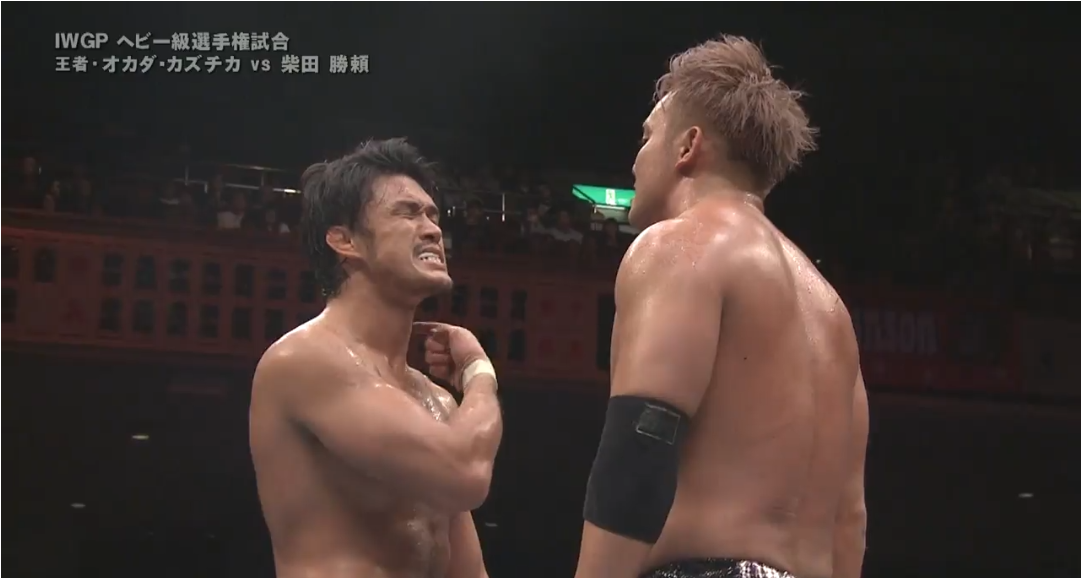
Once again Shibata shows his incredible fighting spirit and fires up on Okada’s shots, even offering free strikes. Okada falls for this trap with Shibata regaining the advantage through vicious strikes. Many of which start targeting the right arm of Okada to weaken his greatest weapon. As with earlier in the match, we see Shibata challenging Okada’s fighting spirit and urging him to fight back. An act you would normally see from a grizzled champion towards his young challenger. In that moment, Okada answers the challenge to show his own fighting spirit and the resiliency that would lead him to a historic reign. This shifts the momentum as Okada looks for the kill shot with a Rainmaker clothesline. Here we see the continuation of a long and slow developing story. In Okada’s previous defences his opponents had found ways to counter the Rainmaker. Shibata is no different as he counters with an STO.
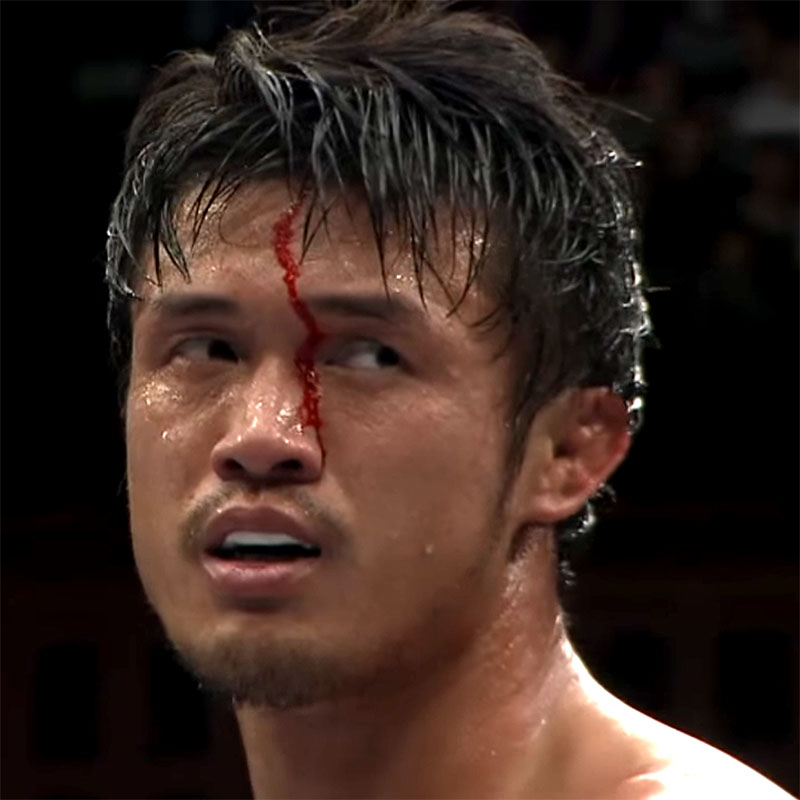
After 30+ minutes we’re back to a stalemate with both men trading the momentum. In an act of defiance, Okada sits down in the ring to welcome the strikes of Shibata. Almost like this is the only way that he can prove himself. Sat cross legged facing each other both champion and challenger rain down brutal blows. Even at this point in the match, there is still no clear cut winner. Okada tries for the Rainmaker but is initially blocked with kicks from Shibata. One last chance shot sees Shibata absorb the Rainmaker followed by a headbutt that would change his life forever. The sickening thud as their heads colliding followed by the blood trickling down Shibata’s head gives hint at the damage done. Remarkably, the match continues for a further seven minutes as Shibata looks to finish the champion. A Rainmaker chop and disrespectful kicks lights a fire under Okada as he avoids the PK to hit his own Rainmaker. Maintaining wrist control, they exchange strikes again which gives an indication to how server Shibata’s injury is. A final Rainmaker seals the win for Okada.
The Aftermath
I’ve never felt such a wide range of emotions after a match as I did after Shibata vs Okada. The elation and buzz of witnessing an incredible match quickly turned to one of concern as Shibata struggled to walk to the back. This wasn’t a wrestler selling the effects of a match but a man in real trouble. My worry turned to horror as the reports surfaced detailing the extent of Shibata’s injuries. The subdural haematoma left the right side of his body paralyzed with a loss of vision in one of his eyes. Thankfully, these side effects weren’t permanent and after several surgeries Shibata would create another timeless moment.
On the final day of the G1 Climax 27 a familiar theme would ring through Ryogoku. To the delight of shocked crowd, Shibata walked down to the ring and declared “I’m alive!!” So powerful was this moment that fans were crying tears of happiness. Their hero, who had almost given his life for them, was alive and happy. In the following years, Shibata would turn his attention to the LA Dojo and passing on his incredible knowledge. Here he seems to have found a certain level of peace with his career ending.
If you have never seen this match then I urge to watch and enjoy one of the very best matches that has ever taken place. More importantly, it’s the perfect tribute to the wonderful legacy of “The Wrestler” Katsuyori Shibata. It can be found on NJPW World by following the link below:
https://njpwworld.com/p/s_series_00433_1_09
